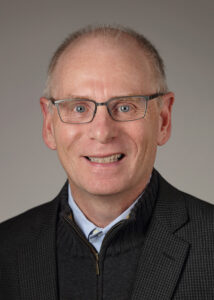American Cancer Society states we will likely see about 609,820 deaths as a result of cancer. Local experts discuss ways to keep cancer at bay
By Deborah Jeanne Sergeant
In January, the American Cancer Society published its annual cancer outlook statistics.
Among the findings, the society stated that in 2023, 1,958,310 new cancer cases and 609,820 cancer deaths are projected to occur in the United States.
Other findings include:
• Prostate cancer increased by 3% annually from 2014-2019 after declining for two decades, which means 99,000 new cases.
• Lung cancer in women decreased at one-half the pace of men, 1.1% vs. 2.6% annually between 2015 and 2019.
• Cancers of the breast, uterine, liver and melanoma increased.
• Cervical cancer decreased by 65% between 2012 and 2019 among women in their early 20s.
• The death rate of cancer declined by 1.5% between 2019 and 2020, contributing to an overall 33% reduction since 1991, an estimated 3.8 million deaths averted.
• Cancer is still the second-leading cause of death in the US.
Heredity plays a role in 5%-10% of all cancers, according to the National Cancer Institute. Health habits can reduce the risk of many kinds of cancer.

“Fundamentally, according to the American Cancer Society, at least 18% of all cancers and 16% of cancer deaths are related to sub-optimal nutrition, alcohol, inactivity and excess body weight,” said physician Kaushal B. Nanavati, assistant dean of wellness and director of integrative medicine and survivorship at Upstate Cancer Center.
He believes that minimizing risk for chronic disease helps reduce risk for cancer and that means reducing inflammation and promoting gut health. One important area related to both of these is improving the diet.
“A study showed seven-plus servings of vegetables a day helps prevent the onset of cancer,” Nanavati said.
By covering half the plate with vegetables at lunch and dinner, a person would consume about five to six servings. Snacking on vegetables and folding a cup of vegetables into a breakfast omelet would amount to the recommended seven-plus servings.
“At the cellular level, oxidative stress can damage the cell wall or structure,” Nanavati said. “Vegetables, especially ones that are cruciferous vegetables and those rich in carotenoids, have been shown to benefit preventing certain types of cancer by stabilizing cell and reducing oxidative stress.”
These including broccoli, cabbage, cauliflower, asparagus, spinach, kale and Brussels sprouts.
“When eating fish, go with cold water, wild caught fish,” Nanavati said. “Salmon, tuna and mackerel are excellent examples of fish to eat.”
He cautioned to limit consumption of red meat and especially processed meats, and foods high in sugar, saturated fat, trans-fat and sodium.
“Any consumption of alcohol can increase risk of certain cancers,” Nanavati said. “If you don’t drink, don’t start. If you do, the key is moderation: one serving daily for females or up to two for males is moderate, but more research is showing one for men or women on any given day is better. You can’t save them all up for Saturday night. Fundamentally, if you don’t drink, don’t start.”
Another important factor is bodyweight. Obesity contributes to the risk for pancreatic, liver, colorectal, esophageal, endometrial, kidney and post-menopausal breast cancer. In addition, the extra weight is associated with hormone release, which can spur cancer growth. To help control both weight and hormone levels, Nanavati said to engage in 150 to 300 minutes of moderate to vigorous physical activity per week, plus strength training.
Moderate activity could include walking, dancing, gardening or biking. Jogging, running, aerobic dance, swimming laps or shoveling snow all represent vigorous activity. Strength training could include bodyweight exercise, lifting kettlebells or dumbbells or using weight machines.
“People don’t have to spend thousands of dollars for gym memberships,” Nanavati said. “We can work with our own bodies and there are many online resources. Cato has a community center that has a lot of free programming.”
Many high schools provide free community gym time as well.
Although a few minutes of sun exposure weekly and vitamin D supplementation can help ensure sufficient vitamin D levels, excessive sun exposure raises risk for skin cancer.
“Avoid too much sun and wear skin protection when in the sun to reduce skin cancer,” said Kara Verbanic, public health educator with Onondaga County Health Department.
Wearing broad-brimmed hats, sunglasses and SPF protective clothing helps.
Cancer screenings represent an important tool for both prevention—such as in the cast of colon cancer—and early detection, when cancer is most often easier to treat. Self-exams can also catch cancer early.

“Know your body,” Verbanic said. “If something doesn’t seem right, call your doctor and get checked. Cancer doesn’t always show symptoms early on which makes regular screening key. You may feel fine and not like you need to see a doctor until it’s a problem and by then it can be too late.”
She wants people to talk with their physician about when to start screening, as some people with family history of cancer may be advised to start early. Cancer screenings are available for breast cancer, cervical cancer, lung cancer, colorectal cancer and prostate cancer among others.
William Dahut, chief scientific officer with the American Cancer Society, said that 42% of cancers are preventable.
“If this was a new drug, it would be truly incredible,” Dahut said.
In addition to seeking appropriate screening, exercising, minimizing alcohol and maintaining a healthy weight, he encourages people to eschew tobacco. Tobacco use contributes to risk of many kinds of cancer—not only lung cancer.
“Tobacco is made of thousands of chemicals, including at least 70 that cause cancer,” Dahut said.
The website nysmokefree.com and most healthcare providers offer free tools and resources to support smoking cessation for those who want to quit.

